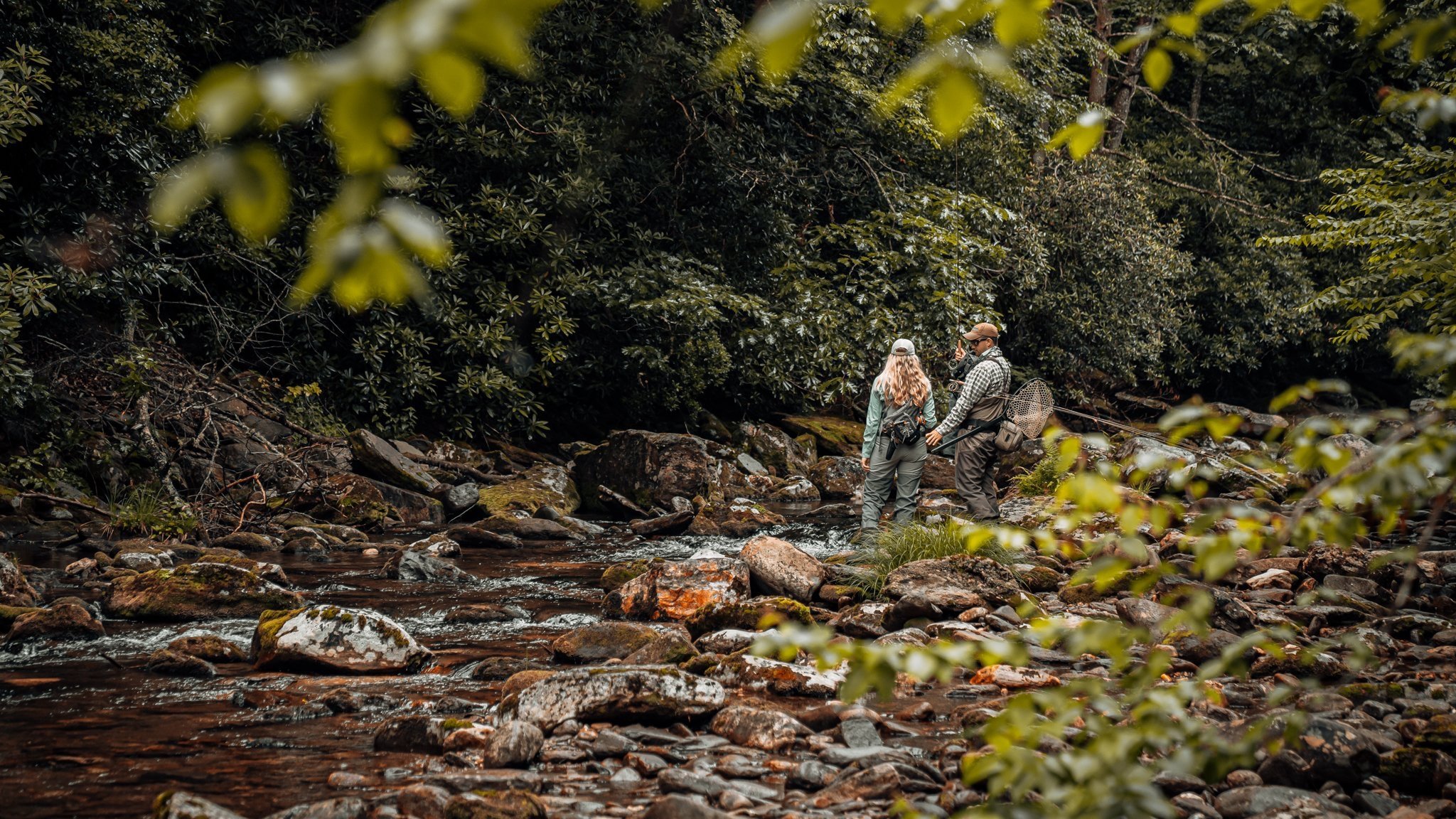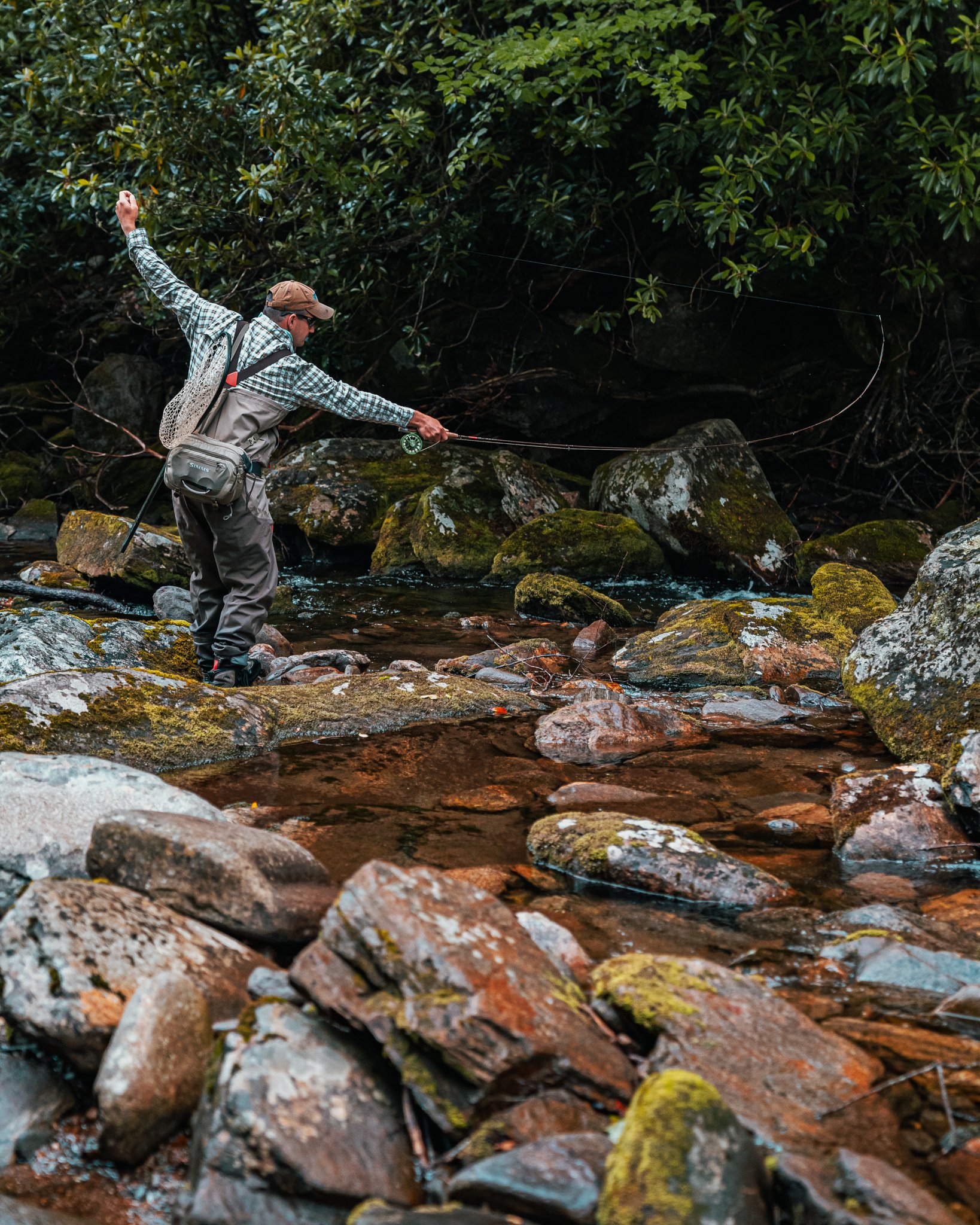South Appalachian Anglers: Cleaning Up Our River Systems
By Ethan Hollifield, Vice President of SAARPC, Inc.
Southern Appalachian Anglers River Preservation Coalition | https://www.saarivercoalition.org/
The Southern Appalachians have long been known for holding a “sense of place” to those who are lucky enough to call this area home. It’s because of these deep roots that Southern Appalachian Anglers (SAA) was created in 2012 by owner/ general manager Paul Kisielweski and his wife, Kacie, to share the beauty of our mountains with others through fishing.
Since that time, SAA has seen a tremendous amount of growth through guiding within the French Broad, Nolichucky, Pigeon, Catawba, and Little Tennessee River systems in Western North Carolina. Any given day might find one of our guides on a small mountain stream casting to wild trout in a rhododendron thicket, or chasing musky floating down the French Broad.
Our region of over 500 individual waterways is a patchwork of different environments that are filled with their own unique characteristics of ecological significance – we can honestly say that we have the best offices in the world! It is because of this that we strive with every guide trip to instill a sense of environmental ethics into each individual that comes fishing with us. Whether someone is fly fishing for the first time, or has been fishing for over 50 years, there’s always something new to share and learn about our home that we hope will help others understand why it’s so important to protect these waterways.
Guiding for three separate species in a variety of different environments and watersheds lends us visibility to many ecological pitfalls that our river systems face. We have witnessed the decline of particular fisheries over the past decade from development, habitat loss, overuse, and of particular concern, trash.
Southern Appalachian Anglers (SAA) was created in 2012 to share the beauty of our mountains with others through fishing.
TRASH BY THE NUMBERS
Head guide Ethan Hollifield, joining 2% in 2019, took it upon himself to go out, collect, and record the number of trash he was finding within the waters he predominantly guided on. The result was 93 bags and over 10,500 pieces of plastic being removed!
Needless to say, this was a big wake up call to all of us at SAA that trash was being greatly overlooked in our area. We firmly believe that we cannot benefit from guiding on our waterways without doing our part to protect them. In 2021, Southern Appalachian River Preservation Coalition (SAARPC) was started by Paul Kisielweski and Ethan Hollifield as a means for us to combat the amounts of trash and plastic pollution in a more organized and diligent manner.
Since its creation, we have removed approximately 3,000 individual pieces of plastic and countless other articles of trash in an effort to keep the river systems we guide free of litter.
MISSION TO CREATE AWARENESS
The ecological impacts of litter in freshwater ecosystems has only been a recently studied phenomena in the scientific community, with most of the focus on trash being aimed towards marine environments. With that said, we have anecdotal evidence – along with an ever growing increase of scientific studies – to back up our sense of urgency.
Microplastics, and contaminants that come from discarded chemical containers (bleach/motor oil bottles), can leach toxins into the local watershed that affect not only aquatic life, but also local water supplies and the water quality of those that live downstream of us. Our mountains serve as the headwaters for major river systems that supply major municipalities in the Southeastern United States with clean drinking water.
Our mission with SAARPC is to help purify our waterways to the best of our ability by removing as much litter out of aquatic ecosystems as possible. Realistically, this is an undertaking that we will probably be doing for as long as our bodies and spirits allow us to. It’s an unfortunate fact that litter, particularly plastics, have become so ingrained in our environment across the world. While discouraging, we also believe that dwelling on past mistakes humanity has made to the environment will do nothing to enhance it for the future.
In addition to trash removal, we also want to ultimately identify and target problem areas that seem to have recurring amounts of trash. To do this, we log how much trash we pick up (in bags and individual pieces of plastic, among a few other categories) to have as a source of reference for trash increase or decrease over time. These numbers are approximations but it gives us a rough estimate for future trash removal projects.
Since 2021, SAARPC has removed approximately 3,000 individual pieces of plastic and countless other articles of trash in an effort to keep the river systems we guide free of litter.
UNDERSTANDING THE PROBLEM
So far, we have collected data over the last three years; there has been a common thread between areas that are heavily trashed and others that have only comparatively minimal amounts.
The waterways with consistently high volumes of trash are generally near roadsides, have easy public access, and see a heavy amount of recreational usage throughout the year. Most litter we find is that of the single use plastic variety (drink bottles, food packaging, plastic bags, bait containers, etc). While there’s no way to trace exactly where each individual piece of trash comes from, we theorize that around 70-80% of the litter removed is a result of being directly thrown/blown out of vehicles near streams. Many of the waterways that we guide on are within at least a few yards of a roadway, as roads were originally built along river valleys for being the flattest land available.
Whether litter is being thrown out intentionally or not isn’t proven though after researching several studies conducted in other parts of the country regarding roadside trash, we can make an assumption that much of it is unfortunately done purposefully.
The remaining 20-30% of trash collected that isn’t directly near roads is either along stream trails, campsites, or popular access points along the course of a watershed. Examples include campsites near rivers with trash left by previous users, to discarded packaging from fishing equipment. A minority of unintentional littering comes from things like segments of fishing line, lost baits/ flies, or other pieces of lost recreational equipment lost.
We at SAA firmly believe that we cannot benefit from guiding on our waterways without doing our part to protect them
CREATING CHANGE
If there is any big take away from all of this, it’s that every single one of us that claims to love the outdoors is in one way or another directly responsible for the wellbeing of our natural areas.
An uncomfortable fact to admit is that we all impact the environments that we spend our time in, whether intentionally or unintentionally. It would be dishonest to say that we haven’t accidentally dropped a piece of trash, or accidently killed a fish, or accidently crushed a rare plant along a streambank.
What drives us as guides and as conservationists at SAA/ SAARPC is our love for the places we work in, because it’s our home. Many of us have experiences from the time we were children playing and exploring the streams we fish, and we feel that we have a duty and responsibility to give back to them for what they have given us. Luckily, the message of litter and its ill effects on aquatic ecosystems is gaining traction.
The French Broad River in particular is a great success story. While far from perfect, the amount of trash that we have seen all along its course through Western North Carolina has decreased dramatically in the last ten years. We want to help push the momentum in a positive direction with help from the public and other outdoor enthusiasts.
HOW YOU CAN HELP
Us here at Southern Appalachian Anglers and SAARPC are excited to share and educate others on this topic, and we will be planning more volunteer events in the near future exclusively for trash pick ups in and around the greater Asheville area.
Here’s some great ways to help join our fight against litter:
Make every effort to prevent any personal trash from entering an aquatic environment.
Pick up any trash that you see while you’re out on the water. While it might only be a couple of pieces at times, it’s still less trash that ultimately has a negative impact on our aquatic resources. (Fun fact, fishing nets make great trash bags in a pinch).
Get a group together to pick up trash along a body of water you frequent regularly, it’s a great way to spend time together in the outdoors while also doing something positive for the local environment. You would be amazed what 30 minutes of picking up trash can uncover.
DONATE OR VOLUNTEER
Following us on social media is a great way to stay connected with us on future events, as well as visiting either https://www.southernappalachiananglers.com/ or https://www.saarivercoalition.org/ where you can find and contact us to help through your time or monetary generosity.
Remember, it’s our responsibility to protect the natural areas that we love. Giving back to these places and educating others is the only way we can ensure that our children, and their children can enjoy the same experiences that we have had for generations to come.



